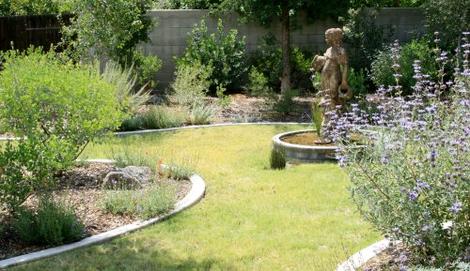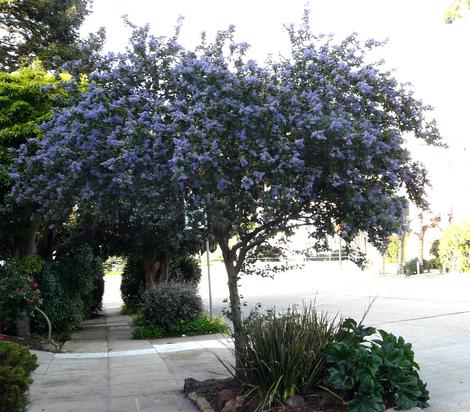Examples of a basic California Native Garden
Native gardens can be all things to all people. There can be a perfect native garden in the eyes of the area's native wildlife, the garden designer or garden owner. The best native garden takes all the pretty native plants from the native flyway (usually Baja to British Columbia for California ), combines them with the local native plants that are important to your local rare wildlife (bees and other insects along with birds), adds in fire considerations, water considerations, soil considerations, slopes, deer and other critters, and ta da! You have a beautiful garden that's alive.
If your garden is a small back yard in a major town, then you really do not have to worry about the deer or fire problem. Focus on the small perennials and shrubs from your area and pack the yard. On small gardens it's important to jam as much focused variety as you can come up with. So for Los Angeles, pack the garden with coastal sage scrub species, three or so of each variety, the larger shrubs like Ceanothus or Arctostaphylos , pick one shrub for each corner, and a small 'tree' in the middle. The 'tree' can be a large shrub pruned up. Mynativeplants.com is an attempt to do this for you, select plants that will work in your yard. You have to figure out a design from those plants.
Basic design, after you've figured out what plants will grow there, is low to high, creating an amphitheater, with your window or doorway the main stage. Put the stuff that needs more water together, sunny stuff together, etc. Keep it simple stupid can be overwhelming. BUT, if you break the yard up into small areas of like minded plants (I'm sorry, but I think plants have feelings too) the design gets a lot simpler.
Many of our customers mix natives with edibles, but
with style,
but keep 'um separated. Others are growing natives on their balcony
in containers.
Even a small yard can be broken into ten plots. One under the bird bath, one along one wall, one along the other wall, one along the east fence, one along west fence, etc. (One commercial planting in San Luis Obispo had a soil pH difference of 5-7.8 in 30 feet, that a thousand times difference in one little section.) If you can break the yard or acreage up it becomes paint by the numbers and much easier. I'd argue, actually much more creative because you can focus on each section more. As long as they are all closely related plant communities, the yard will look great. So if you're in Los Angeles, stay with coastal sage scrub or chaparral plants. If you're in Sacramento, use Central oak woodland, Northern oak woodland or Chaparral plants, with a little riparian plants.





